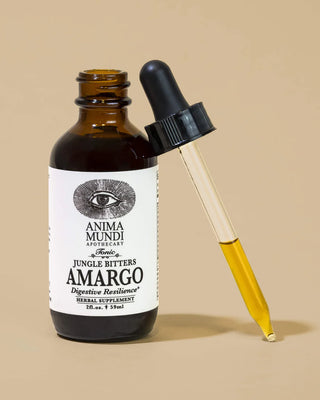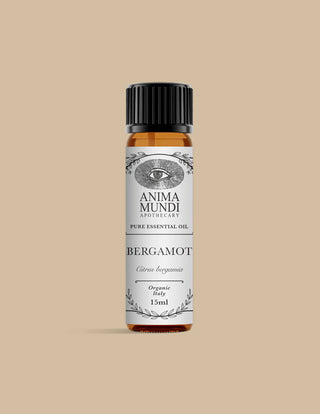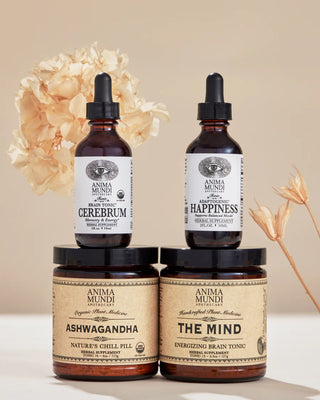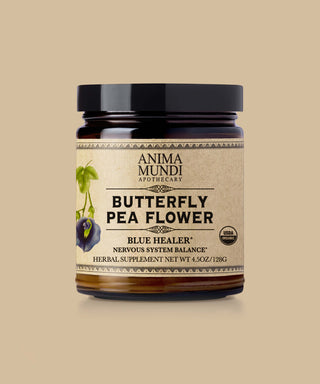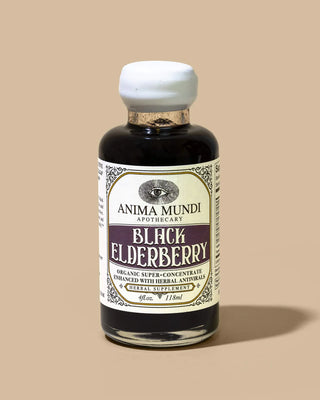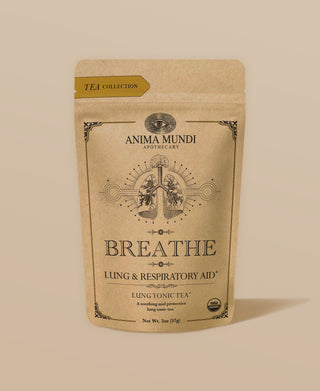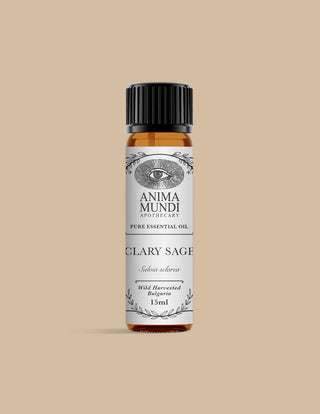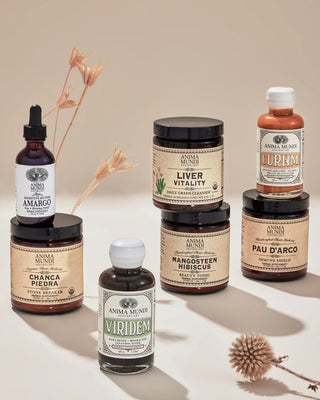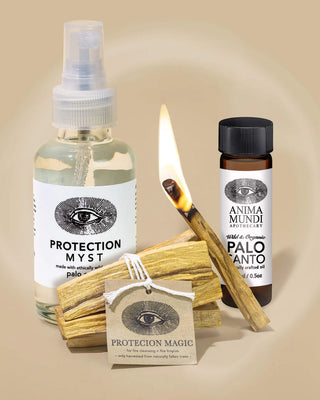All product imagery and descriptions have been graciously provided by Anima Mundi and are displayed for demonstration purposes only. You can buy their products on their online store.
Imagine all the poets, philosophers, and scientists of the world crowded around one table trying to examine and explain the true meaning of love. Perhaps this visualization represents a hopeful future scenario in which the fundamental search for meaning in the human experience centers on love. Some argue this mysterious feeling or state of being is an evolutionary survival tactic; others theorize love as simply chaos. Is love medicine, an innate instinct, or a magic trio? What’s going on in our brains when we experience “love at first sight” (for those who believe it exists), and who’s to say where on the spectrum of lust, attraction, and companionship the true spark of love is initiated? How do we successfully keep the flames of love ablaze? It turns out that a lot of people, from psychologists to experts in all fields, are eagerly enthusiastic to weigh in on the topic.
First, let’s take a look at some love insights from the scientific community that have us thinking from our headspace about our hearts.

The Innate Instinct To Love
“We are born with the instinct to love anything that lives,” says Dr. Predrag Slijepcevic of London’s Brunel University. Dr. Slijepcevic describes this as “biophilia”, or the “instinct to love Gaia as the unifier of all living forms.” Finding the balance between the modern emphasis on loving material things and the innate instinct to love is perhaps one of our generation’s greatest challenges. Seeing ourselves as intricately connected with nature is a pathway to increased well-being, and has been studied for its long-lasting impact on our very survival as a species. Maybe our task is not to fall in love with other forms of life, but to tap into the deep core of ourselves that already knows this love.
Love is Medicine
New York Times bestselling author and functional medicine expert Dr. Mark Hyman recently shared, “When we have a deep connection with someone, it literally changes our gene expression.” Conversely, Dr. Hyman says, if we’re in a conflictual relationship, we’re likely to be more susceptible to increased inflammation, disease, and accelerated aging. “Literally, cuddling can change your epigenome,” he emphasizes, alluding to the field of sociogenomics, a field that examines how social regulation of gene expression impacts the brain. Or, in the words of family therapist Virginia Satir, “We need four hugs a day for survival. We need eight hugs a day for maintenance. We need 12 hugs a day for growth.” Physical touch may be just one of the love languages (more on that later), but there’s an increasing body of research that affirms just how therapeutic loving relationships can be for our individual progress and ability to thrive. Have you taken your love medicine today?

The Magic Trio
More than 40 years ago, bestselling author and therapist Dr. John Gottman embarked on a mission to understand love using science as a lens for his work in his research hub, a.k.a. the “Love Lab”. Working with thousands of couples over five decades, Dr. Gottman is best known for his work on marital stability and divorce prediction. At the University of Washington “Love Lab”, Gottman measured behaviors, perception, and the physiology of couples over time. The data he collected allowed him to create equations that he used to determine the mathematical dynamics of relationships. His near 90% accuracy in predictions of couples staying together or splitting essentially boiled down to one magic trio: calm, trust, and commitment. Listen to his TEDx talk here.
What’s Going On in the Brain?
Breaking down how love impacts the brain might seem like a complicated task, but one graduate student at Harvard University has thankfully made the task a little more accessible to a greater audience with her thoughtfully concise article, “Love, Actually”. Katherine Wu first points to a study led by Dr. Helen Fisher and a team of scientists at Rutgers, in which the authors break down romantic love into three categories: lust, attraction, and attachment. The researchers’ task was to better understand how each type is characterized by its specific set of hormones.
In simple terms:
-
Lust is driven by testosterone and estrogen.
-
Attraction is created by norepinephrine, dopamine, and serotonin.
- Attachment is mediated by oxytocin and vasopressin.

Taking a deeper look, Dr. Fisher and her colleagues explained that while lust is driven by our desires for sexual gratification, this is rooted in our evolutionary need for reproduction. While production of the sex hormones testosterone from the testes and estrogen from the ovaries is stimulated by the hypothalamus of the brain, and some women report feeling more sexual motivation around their ovulation cycles (when estrogen levels peak), the sex hormones are often misinterpreted as being “female” or “male”. Interestingly, testosterone boosts libido in almost everyone. Unsurprisingly, the hypothalamus also controls emotion, along with many other vital functions. When lust and attraction are “activated”, they shut off the rational part of our brains—the prefrontal cortex. Lovestruck, indeed!
Attraction, while often enmeshed with our concept of lust, is somewhat distinct even though it is closely related to the phenomenon of lust. But the “honeymoon phase” of relationships also has a biological explanation. When we’re attracted to someone, the brain pathways that control “reward” behavior are firing, and high levels of both dopamine and norepinephrine are produced by the hypothalamus during attraction. Meanwhile, attraction has been shown to decrease serotonin levels, which is connected to our appetite and mood.

Unlike the two former categories of love, attachment goes beyond romantic engagements to include friendships, parent-child bonds, and all sorts of interpersonal intimacy. The “cuddle hormone”, oxytocin, and the “evolutionarily older molecule” known as vasopressin both play a critical role in our loving attachments. C. Sue Carter of the Kinsey Institute at Indiana University explains how the Oxytocin-Vasopressin Pathway operates in the context of love and fear: “Among the patterns of behavior for which both OT and VP may be necessary are sexual behavior, paternal behavior, and pair bonding. Working together, OT and VP, and their receptors, create a biological and genetic pathway that regulates attachment and bonding, which in turn may be protective against threats or other forms of challenge.” We can see that the brain’s hormones give some insight into the “formula” for love, but beyond this it may be useful to consider that our body’s intelligence naturally separates lust, attraction, and attachment for some pretty important reasons.
Now, let’s see what theories psychologists use to define this phenomenon we call love.
Psychological Theories of Love
Some might say the “Love Languages” have gone viral via memes and mass media mentions, but how well do we really understand this concept and other related psychological theories of love? One of the most recent frameworks proposed by an independent researcher in San Diego, CA is called the Quadruple Theory and claims to go further than previous theories by applying a “dynamism and variation” that provides “a fresh way to understand love from its development to collapse.” Then, there’s the equally on trend Attachment Theory, which was first introduced by two University of Denver researchers in the late 1980s and has been employed by the psychiatric community ever since. The science and theories of love that exist today offer us an incredible tapestry of well-researched information to explore in our search for love. But let’s not forget there are also layers and transcendent experiences of love that neither language nor research can ever fully capture.
5 Love Languages
The author of a New York Times bestselling book that first hit the shelves in 2015, Dr. Gary Chapman, claims that the five “love languages” are “the secret to love that lasts.” Simply put, these languages illuminate how we express and receive love. If you haven’t heard of them, they are:
- Words of affirmation
- Quality time
- Receiving gifts
- Acts of service
- Physical touch

Rooted in his experience in marriage counseling and linguistics, Dr. Chapman and psychologists who have used his framework in their clinical practice emphasize that we may relate to many of these communication styles. However, it’s believed that there will be one that speaks most to our deepest desires and most urgent needs to feel safe and loved in a relationship. The key to feeling most adored by our partners and other loved ones may lie in unlocking how to speak their language.
The Quadruple Theory
Though we’re no academics, we were most intrigued by independent scholar Tobore Onojighofia Tobore’s recent article noting just how complex the “polysemous nature” of the meaning of love has remained for social psychologists attempting to explain it. Like some of the other scientific and psychological frameworks we’ve already touched on, keen readers will notice that Tobore’s “quadruple framework” has much synergy and overlap with previous attempts to suss out what love actually is. The scholar’s Quadruple Theory is based on: attraction, resonance or connection, trust, and respect. How does love grow and die? What are the “levels of love” and how do different factors modulate the intensity of each one? Answers to these questions, alongside a deeper inquiry into brand love, romantic love and parental love, are in this groundbreaking paper. Read it in full here.
Attachment Theory
According to Cindy Hazan and Phillip Shaver, the two researchers who built upon the work of the first attachment theorist, British psychologist John Bowby, the biosocial process of romantic love is similar to the way that children form attachments with their caregivers. Therefore, our attachment styles as adults are modeled on the relationships and bonds we shared with our parents or primary caregivers, continuing to impact how we pursue and maintain connectedness into our adulthood.
The three attachment styles for adults, from most to least common, are:
-
Secure - experiences far less/no fear of abandonment and getting close to others
- Avoidant - fearful or uncomfortable building closeness and trust
- Anxious - characterized by constant worry they will not be loved or cared for

In this way, Attachment Theory, Quadruple Theory, and so many of the scientific findings above help us to see that love is a cyclical process, arguably originating before we are born and certainly shaped in some way by our early experiences with loving adults. Taking it back to where we started: if we surrendered to our innate instinct to love anything that lives, how incredible would that be? If you need a little help getting in the mood, keep reading about herbs to attract and enhance love.
Love Is in the Air at the Apothecary
Don’t wait until the new year to get into the mood for love! Whether it’s spiritual love, self-love, romantic happiness, erotic attraction, sacred heart healing, or anything that exists in the space in between you’re manifesting, we’re so excited to introduce you to three very special new arrivals to the Anima Mundi apothecary. These exceptional tools for attracting and enhancing love in all its forms (like so many herbs in the plant kingdom) address both internal and external concerns and energies. They work with the spiritual and emotional bodies just as much as they are capable of touching and tending to our physical bodies and minds. Introducing love-boosters for everyone …

Rose | Seek Spiritual Love, Bridge Heart-Mind + Open Your Heart
The long history of rose as an aromatic treasure and symbol of beauty reaches as far back as ancient Persia. It has since been revered around the world for both inner and outer beauty enhancement, energetic properties, heart centered work, soothing and relaxing qualities. Rose embodies spiritual love by energetically softening and opening the heart, quieting the mind, and giving us the gift of remembrance that allows us to tap into our essential nature. Supporting more ease and love in our lives, rose builds essential bridges between the heart and the mind, repairing disconnections that may have occurred as a result of loss, periods of sadness, grief, trauma, etc.
As a connective herb, it promotes loving relationships with ourselves and others. This wonderfully therapeutic flower also invites us to remove the thorns of past hurts and “samskara”, otherwise known as the imprints left on our subconscious mind by past experiences. When we are free to move beyond our knee-jerk responses and more rigid states of mind, our emotional bodies may be healed and rejuvenated. In turn, this opens us up to receive more sweetness in our lives by calling in our blessings, like joy and affection of all types.
According to Ayurveda, rose primarily balances “sadhaka pitta”, the subdosha of pitta that governs the emotions and their impact on the heart. Rose is known in Ayurvedic systems to soothe the heart, help us heal from grief, and allow us to move forward to be able to enjoy the present moment. Rich in astringent and toning compounds, Rose Water also proves beneficial to a wide range of skin types and is a potent remedy for alleviating inflammation. The sublime scent of Rosa damascena is truly exquisite: sweet and full-bodied, fresh, warm, and floral with hints of citrus and earthy green.

Night Blooming Jasmine | Inspire Erotic Attraction + Romantic Happiness
With her mysterious sultry aroma befuddling the rational mind with aphrodisiac impulses, jasmine is the foremost of all perfumes. Like all floral scents, jasmine can awaken feelings that have long been forgotten—sentiments that can often reopen a heart protecting itself from the painful stresses of everyday life. Increased mental energy, reduced need for sleep, erotic attraction, romantic happiness, pleasant dreams, and joy are just a handful of the many gifts jasmine offers us.
Ayurveda describes jasmine oil as sweet, cooling, and “tridoshic”, meaning it benefits all body types. When used therapeutically, the oil is said to be nourishing to the tissues while strengthening the nervous system. Recent scientific research has confirmed what traditional Ayurvedic knowledge has observed over many centuries: studies have shown that inhaling jasmine fragrance can produce a stimulating effect on the mind, significantly increasing mental alertness and reducing the need for sleep. As both lovers and tired parents know, these are some prerequisites for romantic fulfillment.
Other researchers have found that jasmine essential oil can increase arousal, breathing rate, blood oxygen saturation and blood pressure, potentially helping to alleviate anxiety and depression as it simultaneously uplifts mood. Ancient herbalists have long employed jasmine as a libido enhancer, spirit lifter, and as a tool for dissolving emotional barriers to help enhance feelings of intimacy.
On the Indian subcontinent, its flowers have been strung around the bridal suite of newlyweds, hung above the marital bed or around the necks of brides to be as garlands, and to scent the hair, among other sensual and symbolic uses. It is believed in some cultures that the flowers’ intoxicating scent is rendered even more powerful at night, and even more so during a waning moon. Perhaps that is due to the fact that the Persian word “yasmin”—translated as “moonshine in the garden”—from which the flower derives its name, evokes romantic feelings and elevated states of mood, memory, and more.

Palo Santo | Create Sacred Spaces for Love + Psychosomatic Healing
“Each place is the right place… the place where I now am can be a sacred space,” said the professor and spiritual teacher Ravi Ravindra. Yet in order for us to access the magical spaces we need to be able to create, to heal, and to stoke the flames of love (whether for ourselves or for others), we must first clear out negative energy. It’s essential to build a container that is able to hold these powerful vibrations. A sacred space for love is a place that feels safe enough for us to fully express whatever it is we want released into the world, our innermost thoughts and feelings.
Dating back to the Incan era, palo santo has been used to cleanse “mala energía” (bad energy) and is considered to possess spiritual purifying abilities. It’s also said that the “holy wood” can support relaxation, meditation, creative practices, and can invite good fortune into the lives of those who open their hearts to the potency of its fragrant magic. Regarded as the “Tree of Life” in many cultures, it’s also believed to have soul cleansing properties, further enhanced by deep aromatherapeutic notes and a wide range of science-backed health benefits for the body and mind.
A potent antibacterial and antimicrobial, palo santo may also relieve sickness and act as a natural air purifier by removing potential microbes from your space. As a psychosomatic healer, it can bring peace to your heart, flood your energy field with light, and repel negative thinking and vibrations. Used for centuries by various ancient cultures to promote a sense of calm and well-being, palo santo is also believed to attract positive, healing, and harmonious energies to individuals and spaces that come into contact with its citrus, resinous woody aroma. Calming, purifying, and protective, Agua de Palo Santo also supports mental clarity and uplifts mood, an essential addition to any herbal medicine cabinet. It’s ideal for those seeking to create maximum comfort while sparking creativity.


